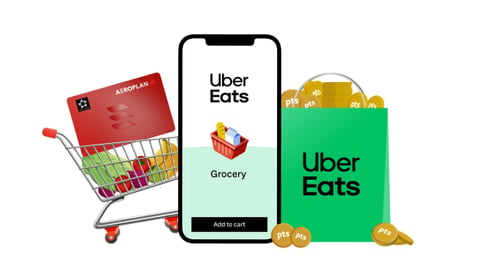Uber debuts group ordering for grocery
At its May 17 GO-GET product showcase in New York, Uber unveiled several innovations for customers, among them group ordering for grocery on Uber Eats. This new service enables customers to invite others to add items, set deadlines for when to order and automatically divide the bill from eligible merchants. Users can also set recurring orders so that group members get regular reminders to add their essentials to the shopping list.
Additional new services from the company are video gifting, enabling users to create their own personalized video message in-app to be delivered along with a Uber Eats gift card or gift to friends and family; family accounts enabling adolescents ages 13-17, with parent or guardian approval, to request their own rides and order their own deliveries using the Uber app, starting on May 22; and the availability of family profiles on Uber Eats, allowing users to manage meals and deliveries for adult family members from a single account.
READ: Higher tech in the grocery store
The upscale event kicked off with an entertaining video showing a family using some of the new offerings, followed by a brief introduction by Uber CEO Dara Khosrowshahi, who emphasized the San Francisco-based company’s commitment to “tech built with heart [and] designed to make everyday life easier.” Attendees were then free to personally experience the products.
Over at Uber’s grocery store mockup, Progressive Grocer exclusively spoke with Therese Lim, the company’s senior director of product, Uber Eats new verticals and Uber Direct. “A lot of everything we do is grounded in customer feedback,” said Lim, “and I think group grocery ordering is particularly salient this year, especially as we’re coming out of the pandemic. …We just thought this was the next evolution in grocery ordering, which allows you to invite several people to your group. Everybody can order their own [items], and then you can even set a deadline for when everybody has to get their items into the shared cart, and then add that deadline [when] the transaction or the actual order gets placed. Everyone can then split the bill in those grocery stores, so that you don't have to have that situation where you’re asking each other for money.”
In response to PG’s observation that the “ultimate use case” for the feature would be roommates wishing to keep their grocery purchases separate, Lim pointed out that it could also be used by traditional families, friends staying together or on vacation, or even workers in small offices. Up to 15 people can be included in a group.
Asked to provide any information on other solutions that Uber is working on in the grocery space, she replied: “We’re always working on a lot of things. [W]e listen a lot to customer feedback. First is making sure on the consumer side that they can easily find what they’re looking for, get inspired for things that they may not even know they wanted, but that Uber does carry. The other big thing that is really important to us is that they can easily order and actually receive the items that they’re purchasing. Another example is we’re constantly improving our replacement experience. When something is out of stock – which hopefully doesn’t happen too often – but if it does, customers are now able to specify if they want a specific replacement that the [Uber] shopper will honor. And, by the same token, if a shopper is asked to make a judgment around what replacement, they’re easily able to send that to the customer, get the feedback from the customer as to whether they approve it or not, and then check that out. So everything is geared towards, we want to make sure you get your items. We’re investing a ton of reliability in making sure that customers have all of that at their doorstep.”
READ: How loyalty programs can deliver the savings shoppers want
To that end, Lim demonstrated on an iPad an Uber feature enabling users to make special requests – that is, “off-menu” items like cut fruit that aren’t normally featured among a store’s available products – pointing out as she did so that app also now enables users to take advantage of their stores’ loyalty programs.
Clearly, grocery is a big deal for Uber, at least as important as its restaurant delivery business, since, as Lim noted, not everyone wants to eat takeout all the time. She also affirmed that the grocery channel represents “a huge investment for us.” As for the next big product drop: Watch this space.



